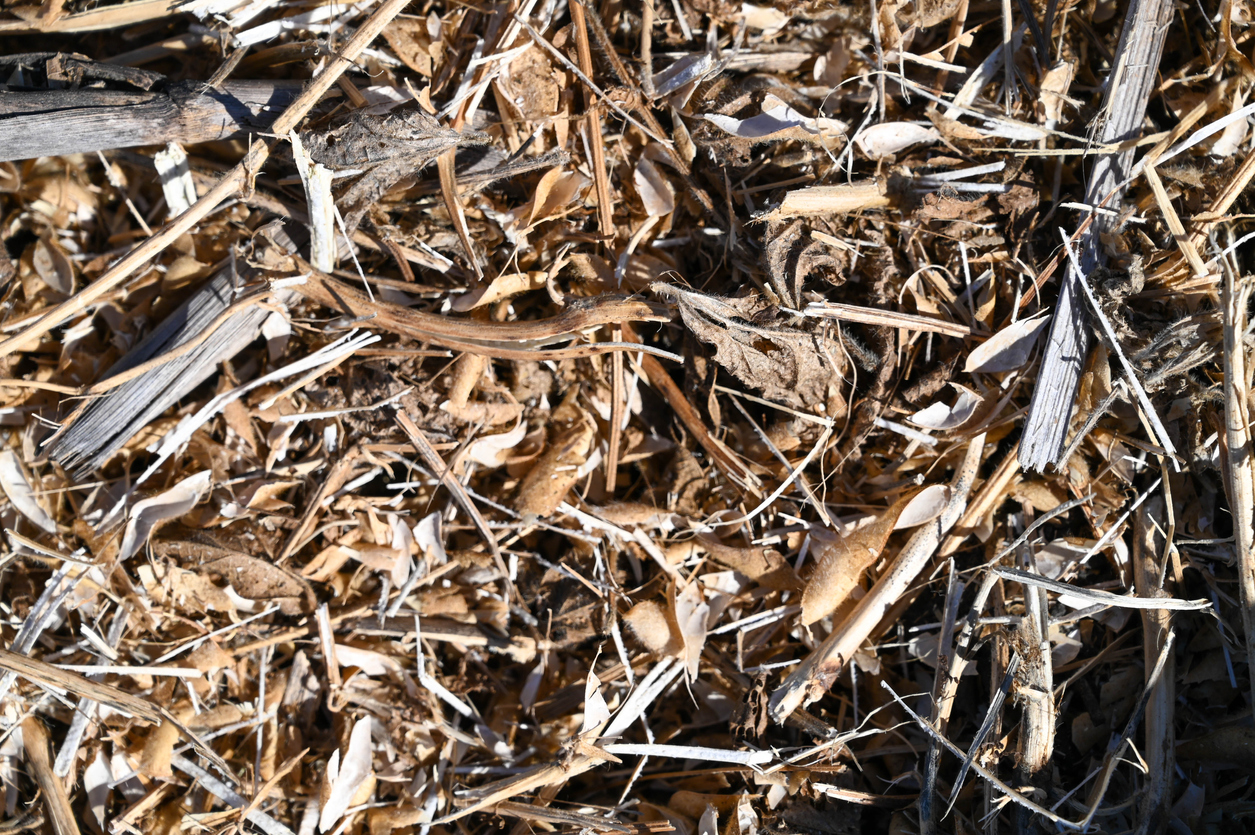Breaking Down Crop Residue
For many farmers, crop residue can either be a plus or a minus. Crop residue has many beneficial plant nutrients when it decomposes, but when the residue is slow to break down, it keeps soils cold and wet, and can be difficult to plant. Good crop residue breakdown is dependent upon moisture, temperature, soil microbes (fungi and bacteria) and particle size. Late harvesting and some insecticides and herbicides may delay or inhibit crop residue break down.
When crop residue is slow to decompose; planting equipment can plug easier, crop populations may decline, and tires on equipment tend to wear out faster. When crops are harvested late, soil temperatures often decline. Most soil microbes (bacteria and fungi) grow the fastest when soil temperatures are above 50OF. Excessively wet soil conditions favor bacteria that thrive in low oxygen, and slows down crop residue digestion. Well aerated soils have aerobic bacteria that consume the sugars and easy to digest crop residues rapidly. Early bacteria digestion opens crop residue up to other soil organisms involved in decomposition The pith in the corn stalks and leaves are easy to digest. Soybean leaves have a high nitrogen content and are generally easy to digest. However, soybean pods and soybean stalks may take longer to decompose, as well as corn stalks and corn cobs. For the tougher residues, fungi are needed to decompose the cellulose and lignin.
Particle size plays a critical role in getting residue to decompose rapidly. In healthy soils; mites, springtails, and earthworms are beneficial in reducing particle size quickly so that the microbes can start decomposition. Neonicotinoids used on seed treatments are generally broad-spectrum insecticides that kill off many beneficial invertebrates that break down crop residue into smaller pieces. Farmers have several options for decreasing crop residue particle size.
First, farms with good soil health seldom have a problem breaking down residue. In many cases, the residue disappears almost too fast. High populations of earthworms and a diversity of crops and cover crops with diverse soil organisms generally speeds up decomposition. The microenvironment is generally slightly wetter and warmer. To get cover crops planted in time, often these crops are harvested a littler earlier, so there is more time for decomposition before winter sets in.
In soils with less diversity; corn stalks, corn cobs, and even bean stalks can stay intact for several years. Nutrients in crop residue many not be plant available and stay tied up. For example, only about 5% of soil copper is plant available. Copper and other soil nutrients may remain tied up in crop residue for 2-5 years. One way to artificially speed up residue breakdown is to use stalk choppers and stalk rollers. These tools increase the surface area so that the soil microbes work more efficiently. However, the later crops are harvested, low temperatures and moisture stress may limit these tools effectiveness. Some no-till farmers use crimper crop rollers to knock down corn stalks to increase soil contact to improve microbial residue digestion.
Once crop residue is broken down into a smaller size, it’s much easier for soil organisms to move it into the soil profile. Earthworms, especially night crawlers, will pull crop residue down down into the soil vertically several feet. Red wigglers (redworms) tend to congregate within the top 2- 4 inches of soil and distribute crop residue horizontally. All worms are great microbial inoculators of crop residue. These soil microbes release many soluble plant nutrients.
Earthworm casts have many more plant available nutrients than regular soil without worms. Total nitrogen is 2.6X higher, potassium 3X , phosphorus 2.5X, calcium 4.5X, structural stability 13X, and cation exchange capacity (CEC) almost 4X higher. This translates into about an extra 30-40# N, 5-10# P, and 35-40# K per acre of additional nutrients, worth at least $50 per acre.
Many companies are now offering microbiological products that contain enhanced soil microbes for crop residue digestion. Most of these products work best if broadcast in the fall. Most products are in a liquid formulation. Look at how many colony forming units (CFU’s) there are per unit of volume. Sunlight especially UV light is deadly to most microbes and watch the storage temperature. Freezing and thawing temperatures reduce biological performance.
University of Illinois research shows that well decomposed crop residue in corn yielded 6 bushels more in continuous corn, and in soybeans, yields were about 4 bushels more. The best time to get residue to decompose quickly is to start in early fall to get the best results. However, it is not too late this spring to speed up crop residue decomposition, but there is much less time.
